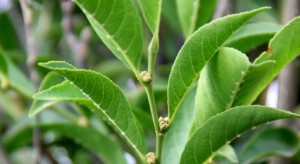 A plant that eat metals to survive. The newly discovered plant species Rinorea Niccolifera can absorb large amounts of nickel without poisoning itself. The plant doesn’t eat metal the way a Venus flytrap sucks down insects; instead, it absorbs it from the soil, thriving in nickel-rich dirt.
A plant that eat metals to survive. The newly discovered plant species Rinorea Niccolifera can absorb large amounts of nickel without poisoning itself. The plant doesn’t eat metal the way a Venus flytrap sucks down insects; instead, it absorbs it from the soil, thriving in nickel-rich dirt.
The plant was discovered by scientists from the University of Philippines. Lead researcher and author of a new paper on the plant, Professor Edwino Fernando, says the leaves of Rinorea Niccolifera can absorb as much as 18,000 parts per million of the silvery-white metal, that’s up to 1,000 times more nickel than can safely be stored in most other plants.
The discovery of the new metal-eating plant – one of only 450 species out of 300,000 known vascular plants that can absorb significant amounts of metal – was detailed this week in Pensoft Publishers’ open access journal PhytoKeys. “The new species, according to Dr. Marilyn Quimado, one of the lead scientists of the research team, was discovered on the western part of Luzon Island in the Philippines, an area known for rich soils in heavy metals,” researchers wrote in a press release announcing the new plant and subsequent scientific study.
Metal-absorbing plants are of significant interest to both environmental advocates and the mining industry. A plant like Rinorea niccolifera can be used to remove dangerous metallic materials from a polluted ecosystem. Once the plant has absorbed a significant amount of metal, they can also be harvested for their commercially valuable contents. “Hyperacccumulator plants have great potentials for the development of green technologies,” explained Augustine Doronila of the University of Melbourne, who co-authored the paper with Fernando.



